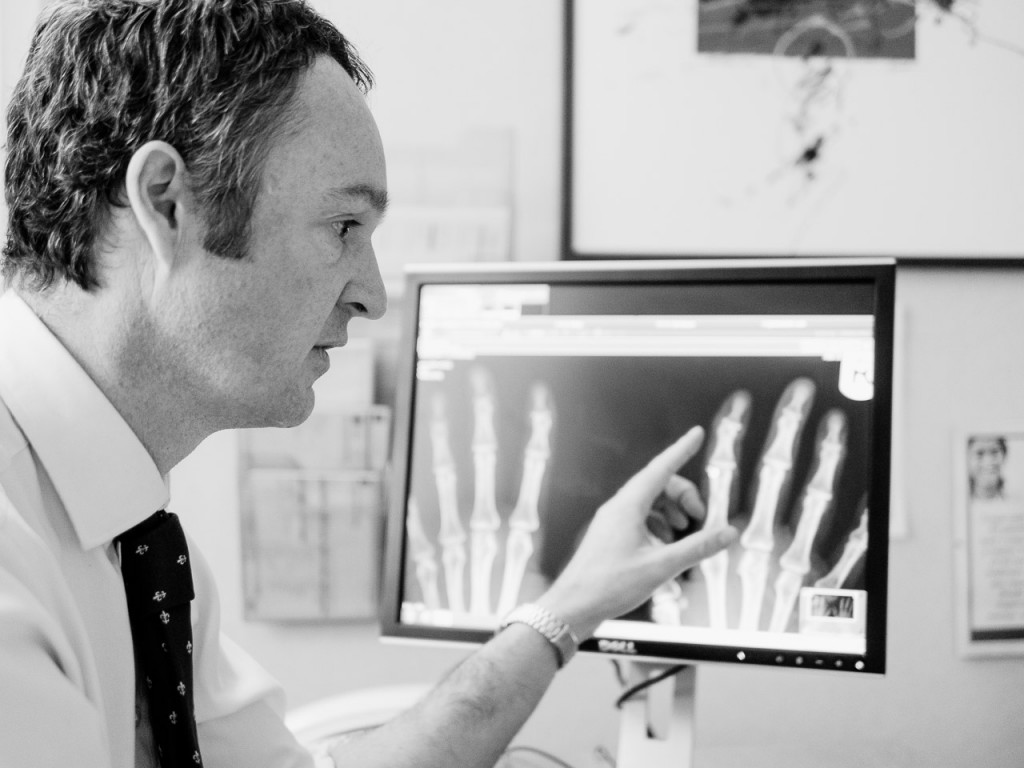In order to treat conditions that affect the hand and wrist you need to develop an understanding of what it is that makes the hand a unique instrument.
Functionally the hand is an impressively complex arrangement that allows both power and tenderness to carry out a wide range of functions. The little and ring fingers are essential for power grip whilst the index and middle allow the deftness of pinch grip for both manipulation and fine, delicate work. To generate the power required to manipulate our surroundings the main muscle bulk is in the forearm, close to the elbow with the power being transmitted to the fingertips by strong tendons. These are in turn kept close to the bone by a series of pulleys to set up a mechanical advantage and transmit the power to where it is required in the most efficient way. These tendons are then supplemented by a series of smaller muscles found within the hand its self that can both help to initiate movement and generate the fine control that is required to be able to write, draw, paint or play musical instruments.
In addition to this there are 32 separate joints from fingertip to forearm, each a complex series of cartilage and ligaments to maximize function and dexterity.
To think of the hand in these terms only is to think of your hand as only a tool that we use to do our bidding. It is however (as these things often are) a far more complex relationship that we have with our hands.
We chose our hands to display our symbols of love and devotion in the form of wedding rings. On meeting someone new we will shake hands and immediately make a snap judgment based on that physical contact. Our hands are used to protect, reassure and, if required, defend those that are closest to us. Our hands are used to caress and love.
So to treat a condition that affects the hand the functional requirements of the individual must be considered and a plan customized and tailored. However it is also important to respect the appearance and aesthetic in order to allow the hand to be able to function in its full role.
I believe that for every problem there is a solution that can be tailored to your specific needs. Treatment may involve injections, splints, specialist physiotherapy or surgery to allow you to return to doing those things that are most important to you.

